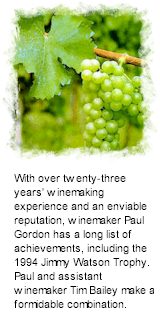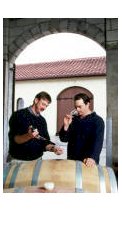


At the fine age of seventy six, after a winemaking career spanning nearly 60 years with the family company in Adelaide, Sydney still yearned to make a classic Australian Cabernet Sauvignon and set himself the task of finding the right district in which to establish his own vineyard and winery. Showing great foresight, Sydney selected Coonawarra as the area with the potential to fulfil his ambitious dream. Thus Leconfield was born, named after an English ancestor, Lord Leconfield.

In 1981, with 65 vintages under his belt, Sydney decided to finally retire and Leconfield was acquired by his nephew Richard Hamilton, based in McLaren Vale. The winery retains its own individual identity and character to this day, representing the essence of the famous Coonawarra strip. The legacy of Sydney Hamilton, one of Australia's true winemaking legends, is very much alive in the form of Leconfield Coonawarra today.
The Leconfield vineyards occupy some of the Coonawarra's richest Terra Rossa soil over Limestone, a composition for which Coonawarra is famous. Original plantings were to the classic variety Cabernet Sauvignon, however Sydney saved a small section of the best soils for Riesling cuttings he had sourced from Happy Valley in Adelaide. This enabled him to continue producing a small amount of dry white wine in the style for which he had become famous.
Fittingly, following a string of wine show successes, the Leconfield Riesling has once again returned to the rightful place that Sydney held for this wine when realising his dream nearly thirty years ago. Subsequent plantings of Chardonnay, Shiraz, Merlot and Cabernet Franc have been made to the vineyard, completing a range of wines which shows the best of what the region has to offer, vintage after vintage. Although made in smaller volumes, the Merlot is extremely sought after and is consistently regarded as one of the best examples in the district

Proud owners Richard and Jette Hamilton are deeply committed to their family owned wine business. Their passion for quality is reflected in all aspects of the business, especially the vineyards and wines on which their reputation is built. A fifth generation vigneron and wine producer, Richard is the great, great grandson of English settler Richard Hamilton, who brought grapevines to the new colony of South Australia in 1837. Establishing their first vineyards at Marion, the Hamilton family were pioneers of the Australian wine industry, and have continuously owned and operated vineyards and wineries in South Australia for 168 years since then.
Richard's interest in all aspects of the wine industry started at an early age when he worked in the family's Sturt River vineyards and winery. Over the years, this interest became a passion and in his early twenties Richard decided to realise his dream of establishing a winery, doing so in the foothills of Willunga at McLaren Vale. In December 2001, Paul Gordon joined the Leconfield team as Senior Winemaker. With over twenty-three years' winemaking experience and an enviable reputation, Paul has a long list of achievements, including the 1994 Jimmy Watson Trophy. Paul plays a key role in the future direction and development of the wines bearing the Richard Hamilton and Leconfield labels.
The success of one of his first wines, the 2002 Leconfield Coonawarra 'Old Vines' Riesling - winning trophies at both the Adelaide and Limestone Coast Wine Shows and Gold Medals in Canberra, Adelaide and Coonawarra - is a testimony to his wine-making skills and passion for his craft.
Assistant Winemaker, Tim Bailey, has been with the company since 1997 and has just returned from doing vintage at Pellegrini Vineyards in California. Tim contributes youthful enthusiasm, innovation and a discriminating palate to the winemaking team. Combined with Paul's experience, skill and maturity they make a formidable combination.
